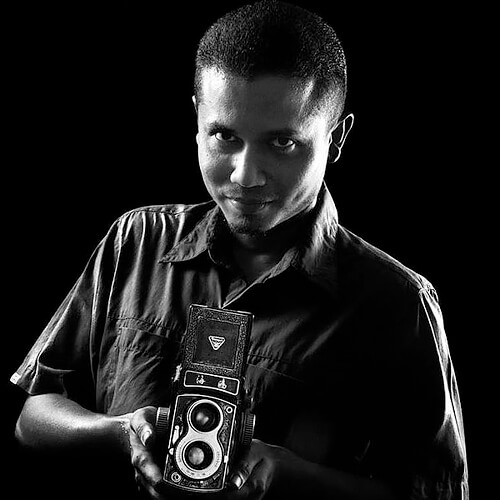Alamsyah Rauf was born in a small district in south sulawesi precisely in Kab.Sinjai, maybe that's why this photographer is less known among photographers in Indonesia but his work has won dozens of world-class photo contest.
After graduating high school, this man married in 2001 on the will of his parents, this makes him unable to continue college. After married Alamsyah worked in his parents' photo studio.
Alamsyah Learning DSLR cameras just look at the camera manual and learn self-taught to techniques of composition, tone, and lighting via internet. In 2004 Alamsyah Rauf set up his own Photo Studio and hire 3 photographers.
As a freelance photographer, Alamsyah takes part in various photography communities, photo exhibitions and participate in various national and international photo contest.
Awards:
2nd Place (Best of Show) 2012 Photoshare Photo Contest (Baltimore USA)
2nd Price Sony WPO 2013 category National Award
Best in Action at Australian Art Sales (Australia)
FIAP GOLD MEDAL in Photo Salon Soul 2013 (Macedonia)
FIAP Silver Medal 4th International Photo Exhibition Photo Focus 2013 (Russia)
PAM Gold Medal at 2nd International exhibition of art photography SOUL 2014 (Macedonia)
Second Winner General category HIPA 2014 Dubai
1st Place Portrait at 7th Annual Masters Cup 2014 (Beverly Hills USA)
1st Place (Portrait category) the 7th Annual International Color Awards 2014
FIAP Gold Medal at 38th EX HIBITION OF PHOTOGRAPHY "CHILD 2014" Serbia
SALON praise 38th EXHIBITION OF PHOTOGRAPHY "CHILD 2014" Serbia
FIAP Gold medal, FIAP Silver medal, PSA Gold Medal, PSA Ribbon in 2nd Cairo Int.
Photographic Art Exhibition - CIPAE 2014 Awards (Cairo, Egypt)
Ozone zone Gold Medal (Happiness),
FIAP Ribbon (monochrome) Ozone zone International Photo Contest 2014 (Canada)
RPS Gold Medal, 2nd Photovivo Singapore International Photography Award (PIPA) 2014
FIAP Silver Medal (Open Color) 1St GIFSAD INTERNATIONAL PHOTO CONTEST 2014 (TURKEY)
Champaign 1 colorful alfaink photo contest nusantara 2015.
"Grand Prize" Winner at The Shutterview International Photography Competition 2015 (Australia )
2nd Place (people category) Fine Art Photography Award 2015
Grand Winner Xposure International photo contest 2016 (Sharjah UAE)
First Place Proify Annual International Photography Awards 2016
Merit Medal Recipient "THE CHALLENGE" HIPA 2017 UAE
5th Place All About Photo Awards 2018
